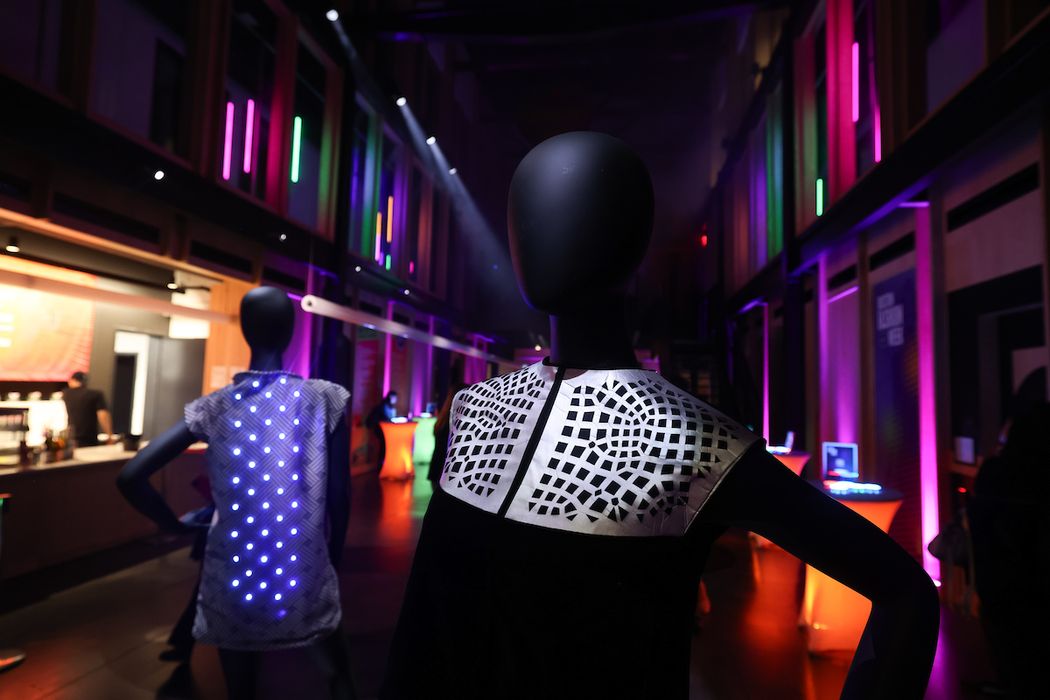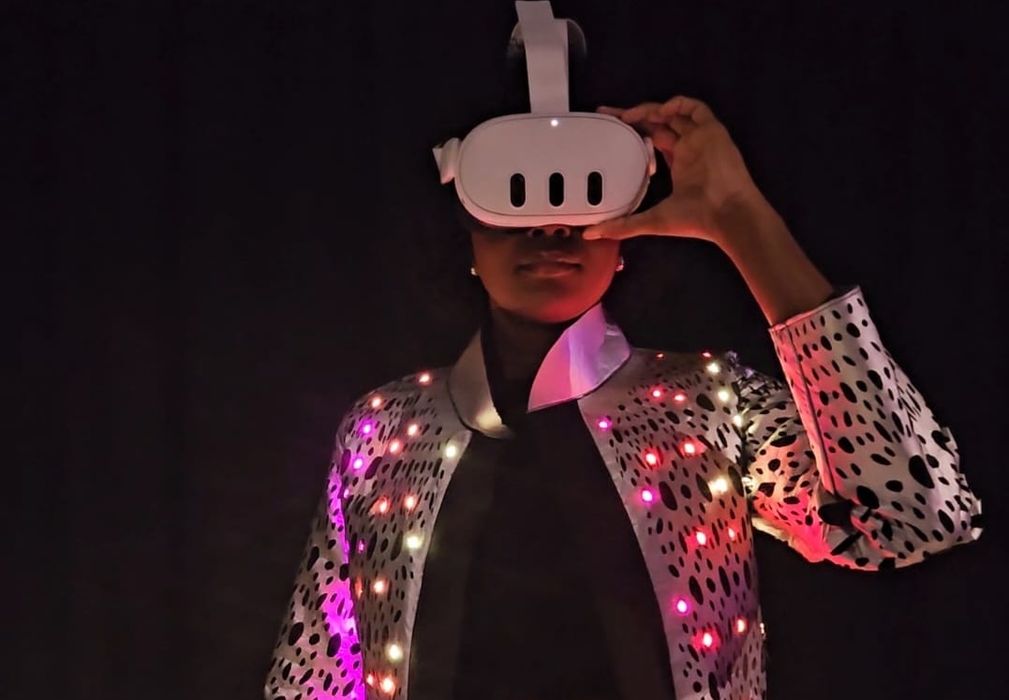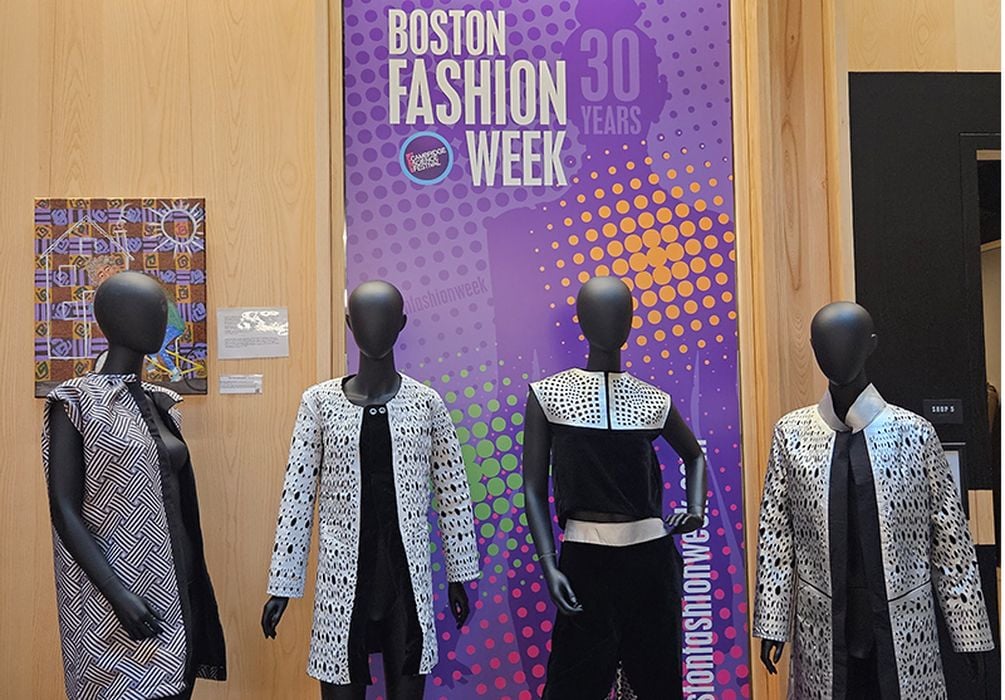
I had a chat with Ganit Goldstein, who is researching advanced fabric 3D printing.
She is no stranger to our pages, having been featured for her work with Stratasys in 2020, a collaboration with Satori, and as our Design of the Week in 2022.
Goldstein has been mixing fabric with 3D print technology for several years, and even includes electronic features.

Goldstein reached out to discuss her latest work. After studying fashion at the Royal College of Art in London, and as of 2021, she’s been a computational designer and textile researcher at MIT’s Morningside Academy for Design. There she investigates “soft systems” and “smart textiles”.

Goldstein first described her latest public exhibition, “Electric Skin”, which displayed garments with conductive threads. She explained that this can make the electronic proximity sensors much more responsive. How does it work? Nearby people wave, and the garment provides a visual reaction.
She explained that the garment is a multi-layer configuration of fabric, with a base and electronics layer in a kind of sandwich design. She had experimented with similar designs in the past, but explained that electronics have significantly miniaturized in recent times, allowing for more capabilities. She said:
“The materials are way beyond ten years ago! It’s now possible to embed much more in a wearable.”

The Electric Skin project, shown here, involved a female subject. She’s hoping to do a corresponding men’s outfit, if she can persuade Stratasys, which has sponsored her work.
MCP Spacesuit Research
Goldstein then explained her other work at MIT, which could be far more interesting than the fashion project above: she’s researching the design of a radically different spacesuit using her experience and knowledge of smart fabrics and 3D printing.
Today’s spacesuits are essentially a human-shaped balloon that holds pressurized air to keep the wearer alive. The problem is that the pressure is so huge when compared to the outside vacuum of space, the “balloon” is hard to flex, particularly the finger joints.
Goldstein’s concept is entirely different. Instead of using the balloon approach, she’s using something called “mechanical counter pressure”, or MCP. The idea is to have a fabric simply press against the body with the right amount of pressure, equivalent to normal air pressure. The wearer would still require a helmet and breathing apparatus, but the rest of the suit would be far simpler and easier to use.
That all sounds terrific, but in practice it is astonishingly complex. Goldstein explained that the amount of compression required varies by area of the body. Some require more pressure, some less. Complicating the matter is the flexibility of joints, which require stretching and increasing (or decreasing) the pressure at those points.
To figure all this out, Goldstein has been using motion capture techniques with sensors to identify patterns of pressure on various parts of the body. She’s developed computational methods to transform 3D body scans into a way to produce portions of the suit.
The suit material itself involves “3D knitting” and embedded sensors. If the pressure issues weren’t enough to complicate matters, the suit will also have to deal with extreme temperature ranges, radiation, and other factors in the space environment. Goldstein said that she’s been working on polyethylene as a material to help protect from radiation and making fabric from metals to produce customized fibers.
Goldstein explained that every person would require a unique suit for fit. This is quite different from the current 50-year-old approach to spacesuits, where there’s a choice of large, medium, or small. In the new approach, even people of identical height will require different suits because their joints will be at slightly different locations.
Gloves are apparently the most complex part of the project, as they are complex, active, and sensitive.
Goldstein has been testing and experimenting with the movement of samples in zero g by riding in a special aircraft that travels along a parabolic flight path, which simulates weightlessness.
She is using many different technologies on this project, including 3D printing. She explained that there is expertise required from many different fields, and that the biggest challenge will be to figure out how to scale production.
While she could not provide images of the still-in-progress spacesuit work, it’s clear that this could lead to an entirely new generation of garments for space. That’s going to be important, as the spacesuits used today were largely built decades ago and are beginning to fail.
Finally, I asked Goldstein whether she would be willing to travel to space someday:
“I will go to space if I have the chance to wear my suit.”
Via MIT
